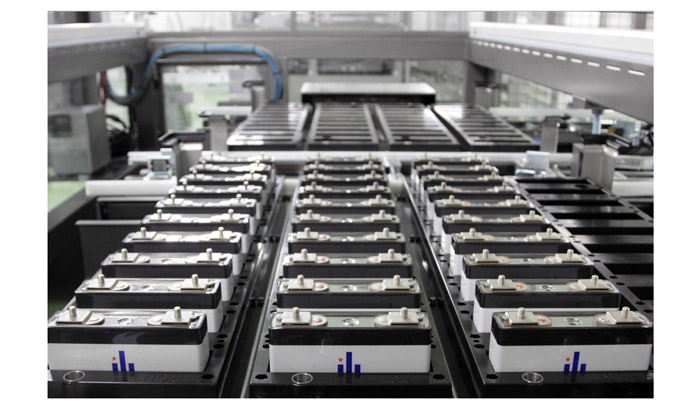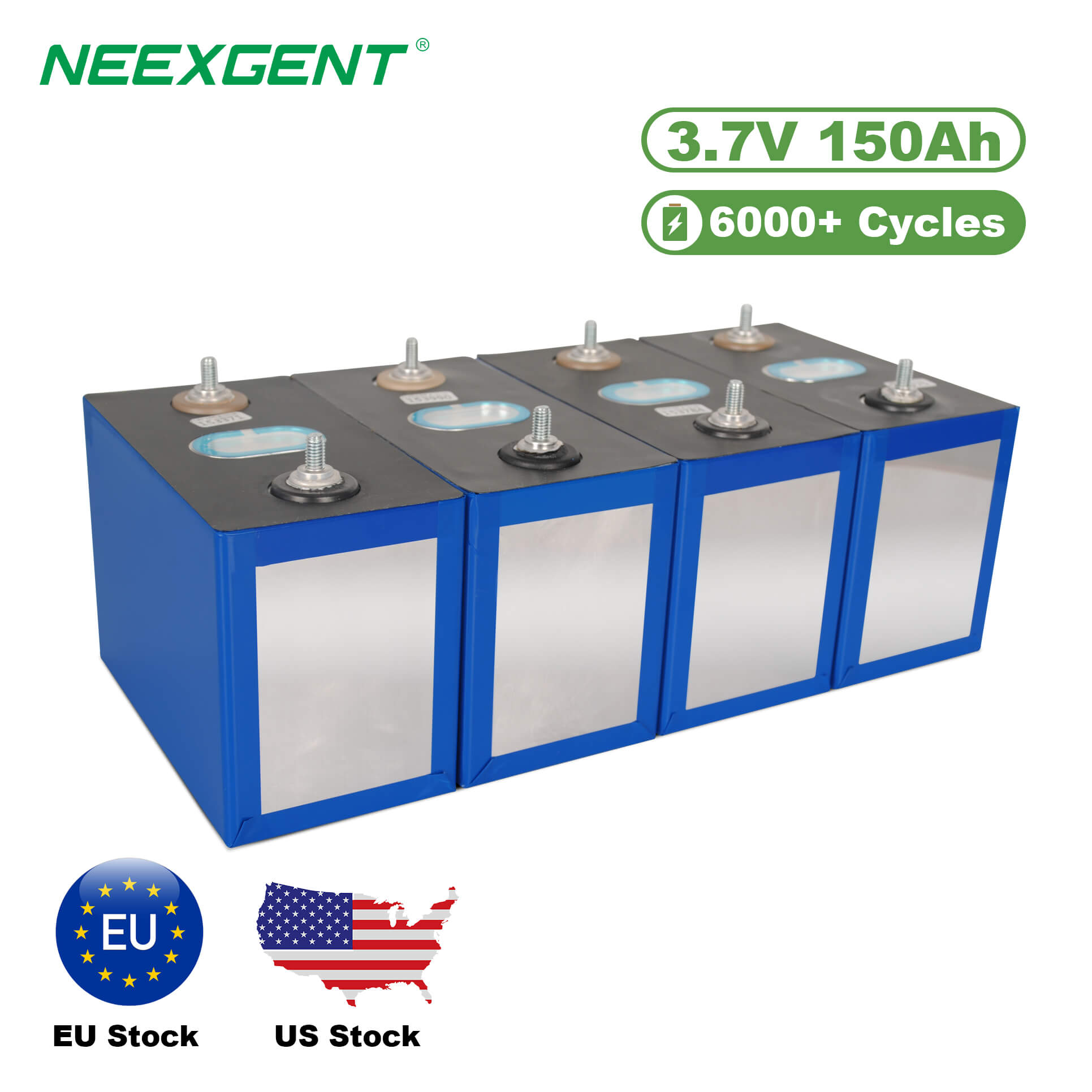Contents:
Lithium-ion (Li-ion) batteries have an extensive application range today. Be it electric vehicles,renewable energy systems, laptops, or smartphones, Li-on batteries power them all. Understanding how these batteries are manufactured requires a closer look at the entire production process from raw material extraction to the final assembly of battery components. In this article, the aim is to explain the detailed and complex process associated with lithium-ion batteries manufacturing.

1. Raw Material Sourcing
The manufacturing of lithium-ion batteries begins with sourcing and preparing raw materials. The essential components of a Li-ion battery include:
-
Lithium: The core element that gives the battery its name. Lithium is typically sourced from lithium-rich brines or hard rock deposits.
-
Cobalt: Often used in the cathode to enhance energy density and performance.
-
Nickel: Also used in the cathode, especially in batteries for electric vehicles, to increase capacity.
-
Graphite: Used in the anode of the battery.
-
Electrolyte: The liquid or gel medium that allows the flow of ions between the anode and cathode.
-
Separator: A material that prevents direct contact between the anode and cathode while allowing ions to pass through.
Once these materials are sourced, they are carefully prepared for the next phase of the process.
2. Cathode and Anode Material Preparation
The most important step in producing a battery is developing its anode and cathode materials.
- Cathode Material: The cathode can be assembled from lithium cobalt oxide (LiCoO2) along with lithium iron phosphate (LiFePO4) or nickel manganese cobalt (NMC). For it to be functional, the active material (lithium compound), conductive additives (like carbon), and binder (such as polyvinylidene fluoride) must be completely mixed together. In order for the mixture to be fully accurate, consistent coating has to be put on aluminum foil that performs up to par.
- Anode Material: The Anode, which is commonly made of graphite, is similarly coated onto a copper foil with a binder. In advanced designs, silicon is added which improves the energy density of the anode material.
Both the anode and cathode materials are effectively dried to wipe out any water that may have a negative impact on battery performance. The methods for drying are helpful in making certain that the materials do not break down before the next steps for anode and cathode materials can be taken.
3. Electrolyte Preparation
The electrolyte is one of the most important parts of a lithium-ion battery. It acts as a medium for the movement of lithium ions between the anode and cathode during charge and discharge cycles. The electrolyte is usually composed of lithium salts such as LiPF6 and a solvent mixture, which may include ethylene carbonate and dimethyl carbonate.
The prepared electrolyte faces strict quality control checks to verify that it is pure and meets certain standards that enable the battery to function. This is important because defects in the electrolyte can lead to battery failures that may include thermal runaway and short circuits.
4. Cell Assembly
Cell assembly is where all the components come together. The process can vary depending on the design of the battery and the type of cells being produced (e.g., cylindrical, prismatic, or pouch cells). However, the general steps in cell assembly are as follows:
-
Electrode Stacking or Winding: The cathode and anode materials, along with separators, are stacked or wound together in a precise configuration. The separator is inserted between the anode and cathode to prevent them from short-circuiting while allowing lithium ions to pass through. The electrodes are often wound into a spiral shape for cylindrical cells or stacked for prismatic cells.
-
Electrolyte Filling: Once the electrodes are in place, the electrolyte is introduced into the cell. This step requires careful handling to prevent contamination and ensure uniform distribution of the electrolyte throughout the cell.
-
Sealing: The battery cell is then sealed to prevent leakage of the electrolyte and to ensure safety. This sealing process also protects the internal components from environmental damage.
5. Formation and Aging
Once the cells are put together, they go through a vital development step called formation. This consists of charging and discharging the cells once or twice to an appropriate level in order to set off the electrochemical processes of the cathode, anode, and electrolyte. At this point, the battery's operated parameters and its capacity are measured and adjusted.
After formation, cells are aged for a period of time in order to achieve the stabilization of their internal structure. Aging provides some time for the internal battery parts to settle and makes it possible to diagnose the cell geometry and materials problems well in advance. Moreover, this step is intended to improve the battery life and performance.
6. Battery Testing
Before the battery cells are packaged into modules or packs, they undergo rigorous testing to ensure they meet the required performance standards. The tests typically include:
-
Capacity Testing: To measure the battery's charge capacity and its ability to hold and release energy over time.
-
Cycle Life Testing: To determine how many charge and discharge cycles the battery can undergo before its capacity significantly degrades.
-
Safety Testing: To assess the cell's behavior under extreme conditions, such as overcharging, short circuits, or exposure to high temperatures.
-
Voltage Testing: To ensure that each cell operates within the designed voltage range, ensuring compatibility with other cells in a battery pack.
7. Battery Pack Assembly
After passing their individual tests, the cells are integrated into bigger battery packs. The assembly procedure includes two methods: series or parallel connections, depending on the required voltage capacity. During this step, a Battery Management System (BMS) is also added to oversee and manage the activity of every cell within the pack.
The BMS protects the battery’s health by preventing overheating, overcharging, and undercharging. In addition, it captures some of the critical information regarding the battery’s performance, such as state of charge (SOC), state of health (SOH), and temperature. After, the individual cells are secured in protective coverings, which are usually crafted from metal or high-grade plastic to protect them from physical harm and environmental factors.
8. Final Testing and Quality Control
The final step in the manufacturing process is comprehensive quality control. Each battery pack undergoes a series of tests to verify its safety, performance, and durability. These include:
-
Electrical Testing: Ensuring that the battery pack meets the desired voltage, current, and capacity specifications.
-
Environmental Testing: Subjecting the battery to high or low temperatures, humidity, and vibration to simulate real-world conditions.
-
Safety Testing: Ensuring that the battery pack is resistant to punctures, shocks, and other potential hazards.
Once the battery pack passes these tests, it is ready for distribution to various industries and consumers, ready to power everything from smartphones to electric cars.
Conclusion
The processes involved in manufacturing lithium-ion batteries are intricate and sophisticated, starting from procuring raw materials to assembling the final battery pack. Battery manufacturers are improving the efficiency, capacity, and safety of these batteries as technology evolves. With the increasing prevalence of electric vehicles, renewable energy storage systems, and portable electronics, the market for lithium-ion batteries is likely to increase tremendously. Therefore, innovations in the manufacturing processes will remain crucial to fulfilling the international demand for energy storage.
FAQs






